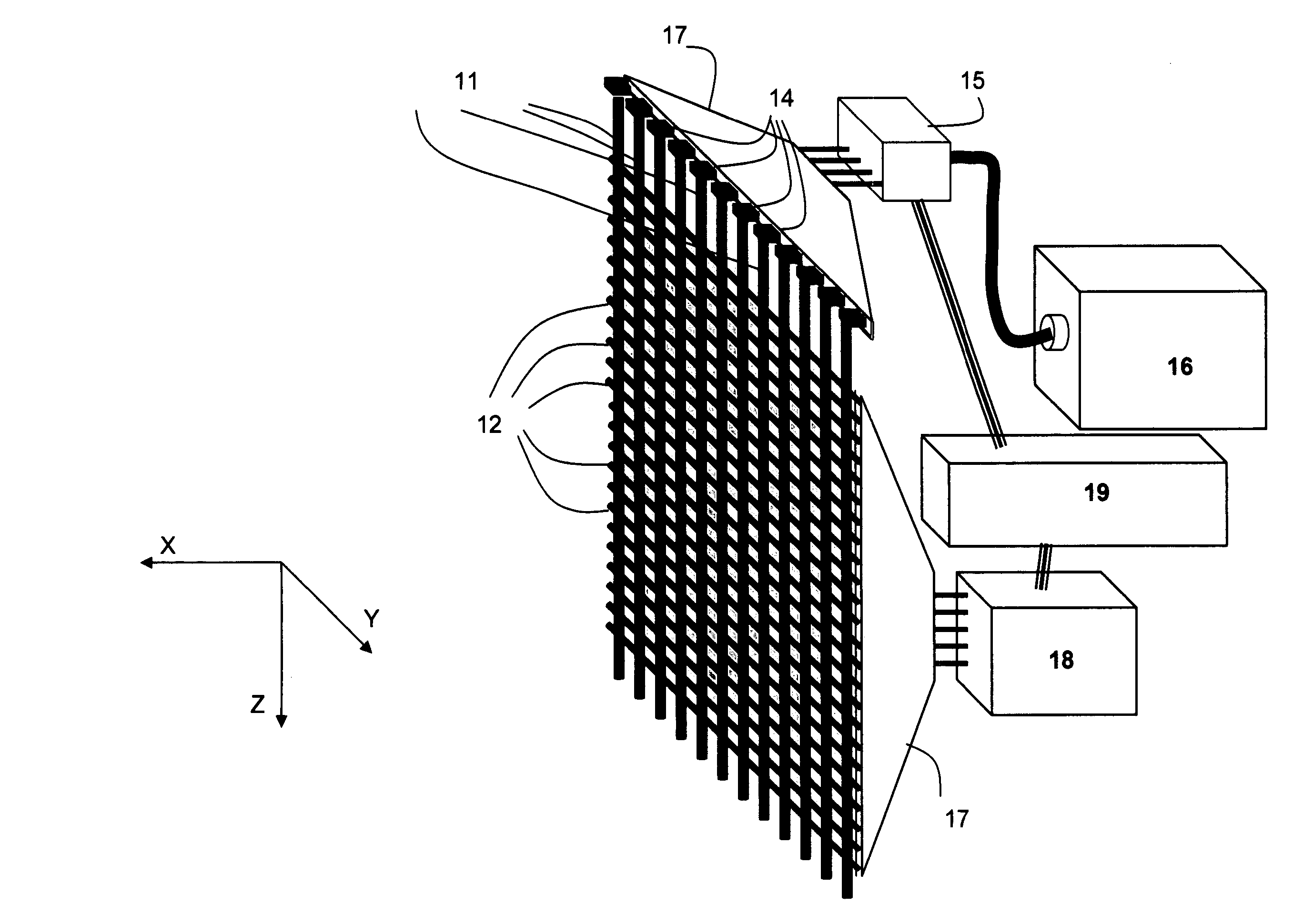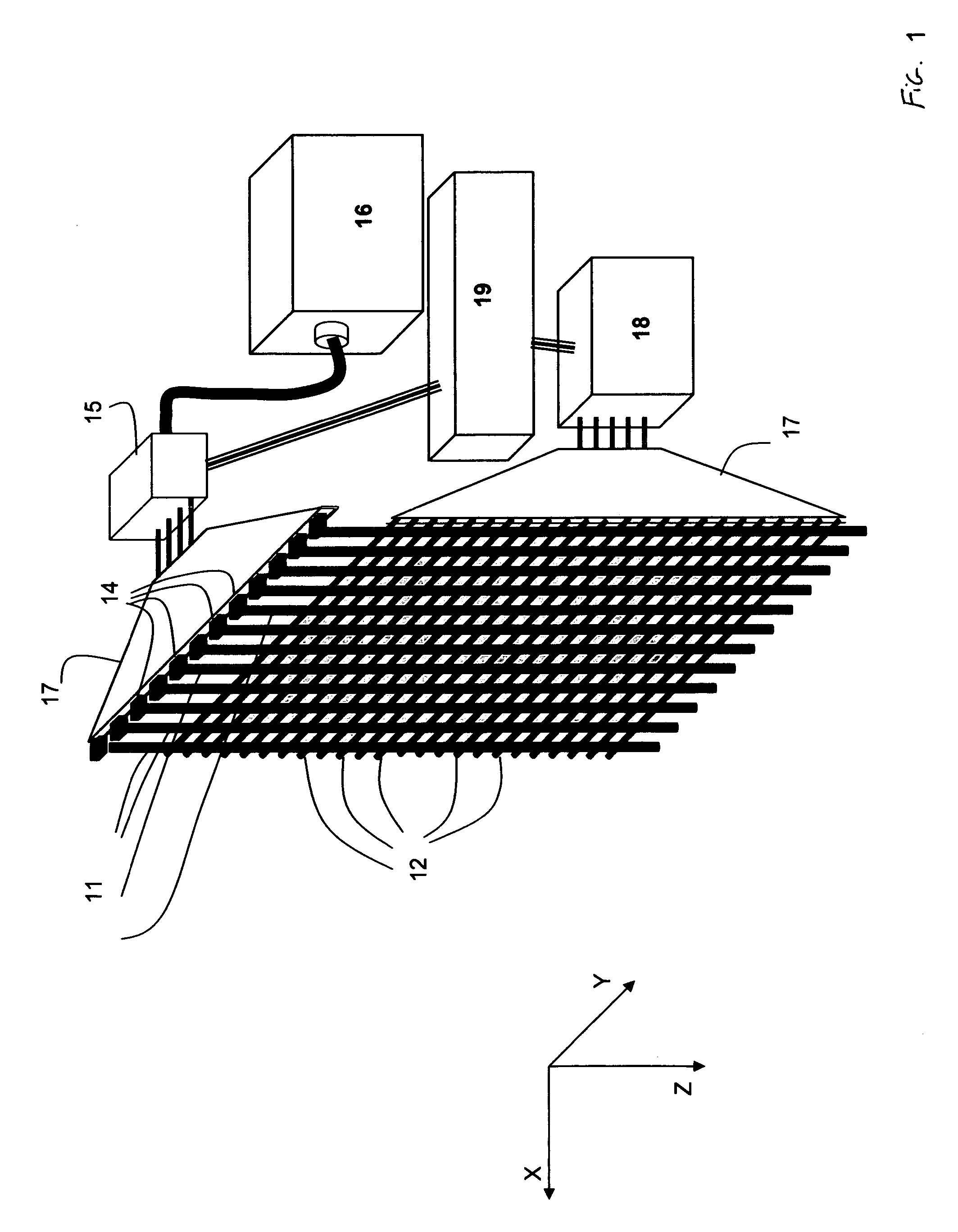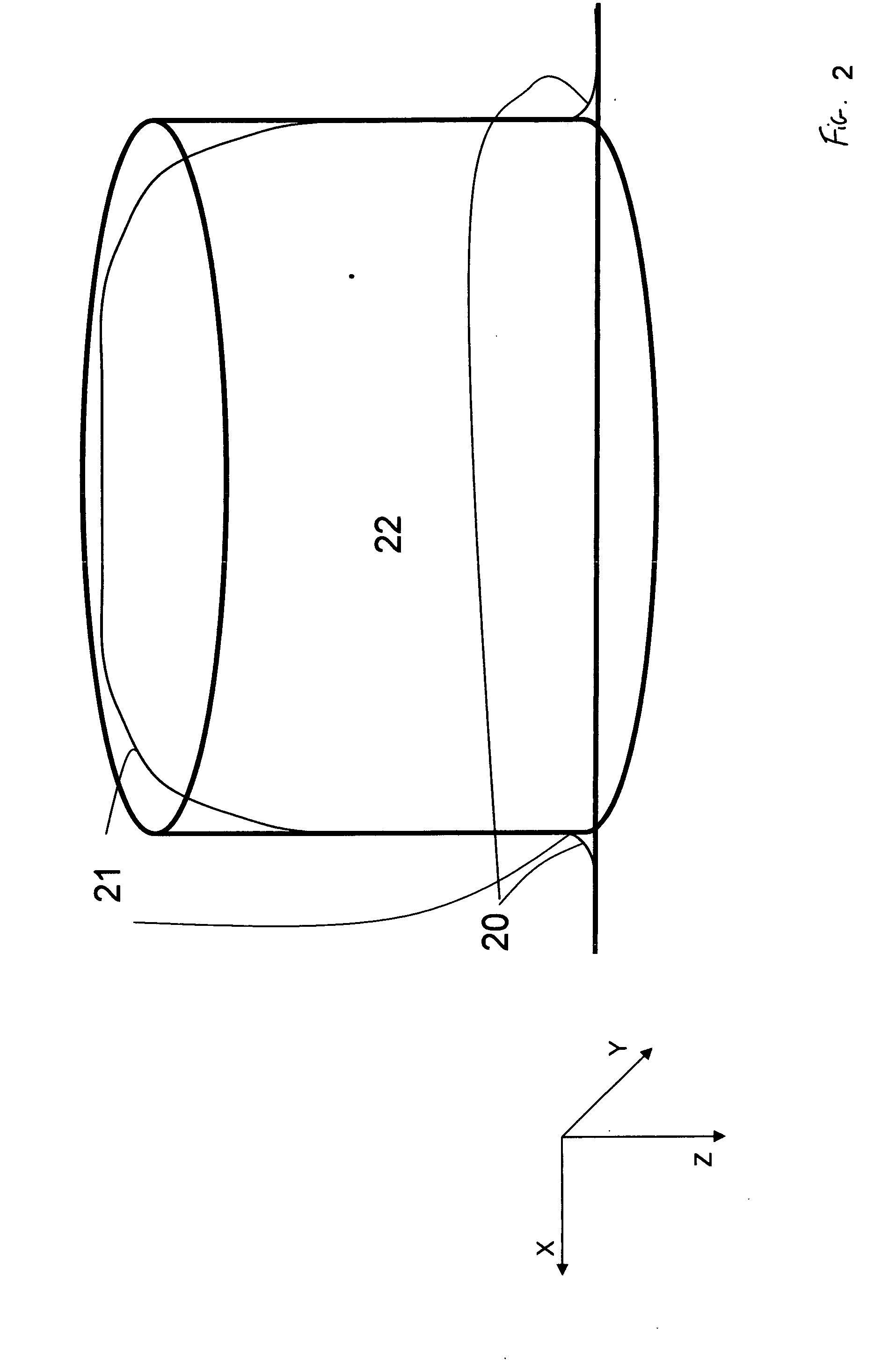However, LCD displays fall short in several areas when compared with the older CRT technology.
First of all, LCD technology cannot match the accuracy of
color reproduction of the CRT technology, because of its smaller color
gamut, defined as the area inside the triangle formed by connecting its three primary colors.
Second, the LCD tends to have much smaller viewing angles, and thirdly, the LCD's
dynamic range falls far short of that of the CRT technology.
However, the LCD technology is still progressing at a rapid pace.
Hence if a pair of mutually orthogonal polarizing filters are added on each side of the
liquid crystal sandwich, the light that passes through the first
polarizer will passes through the second
polarizer if no external
electric field is applied across the sandwich, but it will not be able to pass through the second
polarizer if a strong enough
electric field is applied.
For a large display, it is clearly impractical to address the individual pixel separately because of the number of pixels involved.
They are relatively light weight and thin, and consume little power in comparison with CRT screens that they displaced.
However, LCD displays can't compete with
CRTs when it comes to chromatic range, and
response time.
It is inherently unstable since the ions and electrons have a tendency to recombine into neutrals.
However, since
plasma displays require a large glass
enclosure that can withstand
atmospheric pressure, they tend to be a lot heavier and more costly to make, hence once the cost of the drive
electronics gets lower as
chip technology improves, the overall cost of
plasma displays will eventually become higher than that of LCD displays.
However, since it would be difficult to manufacture tiny
plasma pixels that are less than 0.5 mm in size,
plasma display technology is only for big screens.
Also, since pulse
coded modulation is used for brightness control, some image flickering is unavoidable.
Plasma displays also suffer from “burn-in”, a phenomenon shared by CRT technology.
Finally, compared to LCD screens, plasma displays consumes roughly twice the power of comparable sizes.
Manufacturers prefer LCD because of the similarity to
semiconductor fabrication techniques, whereas plasma screens require large vacuum glass enclosures which still have to be manufactured in the traditional way and does not benefit from Moorse' law.
The lack of backlighting device means that the display can be paper thin and can be bended.
However, currently
OLED technology still surfers from long term stability and durability problems.
This is because
OLED can not tolerate even the tiniest amount of
moisture and / or
oxygen and has to be perfectly sealed.
Also, the
OLED compounds degrade over times, limiting the maximum life of a display.
Also, since the OLED needs not be turned on whenever a pixel is dark, the average power requirement is usually a lot less than that needed to light up all the OLED diodes on the screen, hence average
power consumption of an OLED display is often lower than that of a comparable LCD screen.
The only major drawback is the
longevity of the display materials.
Currently, because of the manufacturing difficulties, OLED displays are still confined mostly to screen sizes smaller than 10 inches, although larger displays have been demonstrated.
Both will increase the cost of the driver hardware dramatically.
Iridigm displays are light weight, low power consuming, and sharp.
Nevertheless, the
usable viewing angles are still larger than those of the LCD technology.
The main drawbacks are the lack of backlighting, the durability (MEMS technology generally suffers from
stiction problem, a problem associated with the tendency of the MEMS parts to stick together or slide poorly.
The problem gets worse with age), and the
scalability to very large scale displays.
All the aforementioned display technologies suffer from the problems of high initial setup cost as well as high recurrent production costs.
Moreover, none of the technologies mentioned scale up very well to very
large screen sizes.
In the case of plasma displays, such large glass panels also need to withstand the enormous
atmospheric pressure, which escalates the cost of manufacturing such panels.
For LCD displays, the cost of
active matrix addressing elements goes up dramatically with the screen size.
Although screen sizes of 102″ for PDP (
plasma display panel) and 82″ for LCD have been demonstrated, their production costs will likely dissuade most people from buying them.
However, both still have to overcome their shortcomings in the area of durability and
scalability.
Building a large Iridigm display would be extremely difficult since it would require a large scale MEMS manufacturing.
Current MEMS production technology can only produce small MEMS devices.
Even if such a display screen could be made, the
pulse width modulation used in the passive matrix addressing is still a major problem since as the screen size increases; the MEMS light switches also become proportionally larger.
Since the
response time of the MEMS switch is directly proportional to the size of the MEMS elements, for very
large screen sizes the MEMS switches would fail to keep up with the
fast pulse width modulation necessary to provide the gray scale resolution needed for high quality display images.
Such implementations are inherently costly and do not scale up well to large displays.
The cost of manufacturing and assembling such panels for large displays proves prohibitive.
None of the display technologies discussed above is particularly
power efficient except the one by Iridigm, which currently can't be scaled up to
large screen sizes.
As screen sizes increase, thermal management becomes a big issue which may necessitate the inclusion of
active cooling at some stage.
Although Electroosmotic force is typically weaker than the electrostatic force of other embodiments, the fact that the fluid is overall neutral rather than being charged may be useful in environment where
electrostatic discharge, or ESD, could be a problem.
 Login to View More
Login to View More  Login to View More
Login to View More 


